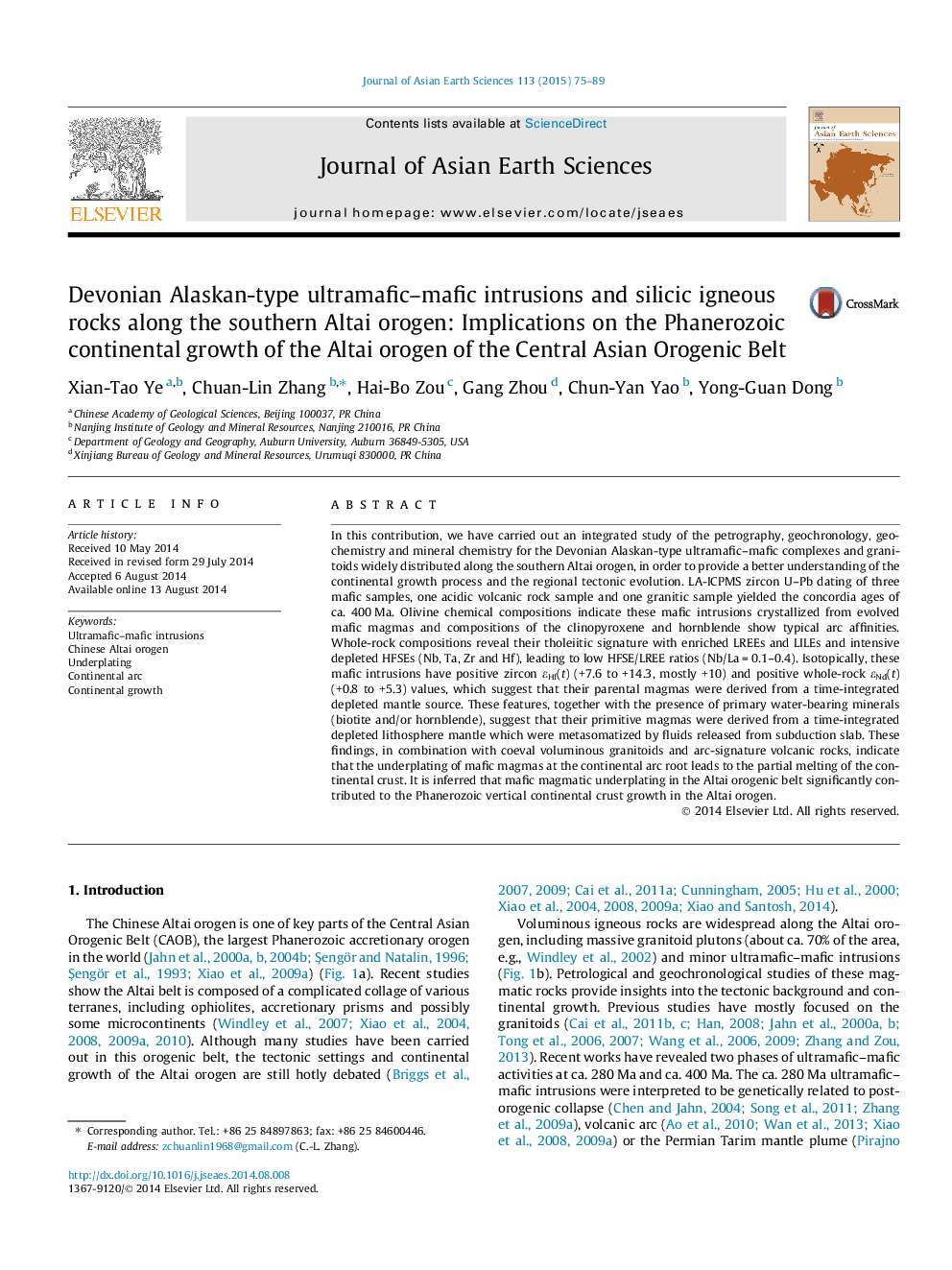| کد مقاله | کد نشریه | سال انتشار | مقاله انگلیسی | نسخه تمام متن |
|---|---|---|---|---|
| 4730216 | 1356743 | 2015 | 15 صفحه PDF | دانلود رایگان |

• Devonian mafic intrusions along the southern margin of the Altai orogenic belt emplaced at 400–380 Ma.
• Geochemistry revealed their Alaskan-type features.
• Mafic magma underplating at arc root was of significance for the continental growth of the CAOB.
In this contribution, we have carried out an integrated study of the petrography, geochronology, geochemistry and mineral chemistry for the Devonian Alaskan-type ultramafic–mafic complexes and granitoids widely distributed along the southern Altai orogen, in order to provide a better understanding of the continental growth process and the regional tectonic evolution. LA-ICPMS zircon U–Pb dating of three mafic samples, one acidic volcanic rock sample and one granitic sample yielded the concordia ages of ca. 400 Ma. Olivine chemical compositions indicate these mafic intrusions crystallized from evolved mafic magmas and compositions of the clinopyroxene and hornblende show typical arc affinities. Whole-rock compositions reveal their tholeiitic signature with enriched LREEs and LILEs and intensive depleted HFSEs (Nb, Ta, Zr and Hf), leading to low HFSE/LREE ratios (Nb/La = 0.1–0.4). Isotopically, these mafic intrusions have positive zircon εHf(t) (+7.6 to +14.3, mostly +10) and positive whole-rock εNd(t) (+0.8 to +5.3) values, which suggest that their parental magmas were derived from a time-integrated depleted mantle source. These features, together with the presence of primary water-bearing minerals (biotite and/or hornblende), suggest that their primitive magmas were derived from a time-integrated depleted lithosphere mantle which were metasomatized by fluids released from subduction slab. These findings, in combination with coeval voluminous granitoids and arc-signature volcanic rocks, indicate that the underplating of mafic magmas at the continental arc root leads to the partial melting of the continental crust. It is inferred that mafic magmatic underplating in the Altai orogenic belt significantly contributed to the Phanerozoic vertical continental crust growth in the Altai orogen.
Figure optionsDownload as PowerPoint slide
Journal: Journal of Asian Earth Sciences - Volume 113, Part 1, 1 December 2015, Pages 75–89